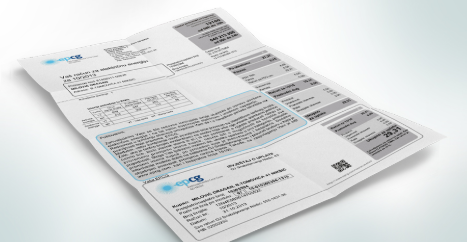The complexity of utility bills is drawing increasing scrutiny from consumers, who are questioning the transparency of charges for electricity and water services. Many individuals express frustration over the myriad of fees outlined in their statements, which often seem excessive and unclear.
Utility bills typically include various charges that can be difficult to decipher. For instance, most electricity bills break down costs into categories such as Active Energy High Tariff (VT) and Active Energy Low Tariff (NT), reflecting actual consumption at the metering point. However, additional charges can include items that seem redundant or unjustified, raising questions among consumers.
Critics point out that charges for network capacity are billed separately for both tariffs, despite the fact that electricity travels through the same infrastructure. This leads to confusion over whether consumers are being charged twice for the same service. Some question why these fees exist and whether they contribute to savings for consumers.
Moreover, the inclusion of costs associated with electricity losses in the network has sparked outrage. Bills often indicate that consumers are paying for energy that has been “lost” before it reaches them, a practice that many deem unfair. As one consumer stated, “Why should we pay for what we never received?”
Another contentious point is the fixed network capacity charge, which some consumers argue lacks clear justification. Questions arise about what exactly this fee covers—whether it pertains to the physical infrastructure or other operational costs—and whether it is necessary given that consumers are already paying for electricity usage.
Moreover, charges aimed at promoting renewable energy sources also raise eyebrows. For example, bills may include fees for encouraging renewable energy development, which consumers argue should not be their responsibility. As one critic noted, “Are we funding the construction of solar facilities? What about the electrification of rural areas?”
In contrast, water utility billing, managed by companies such as Vodovod i Kanalizacija, is perceived as being more straightforward. Water bills typically reflect actual consumption, with additional charges for wastewater management clearly delineated. Yet even here, consumers question the fairness of paying for fixed fees when water usage is low.
The lack of clarity in utility billing has left many consumers feeling frustrated and powerless. Issues like frequent power outages and voltage fluctuations exacerbate the situation, as consumers find themselves billed despite experiencing interruptions in service. Many believe that the current system favors utility companies at the expense of consumers, who are left with little recourse to challenge or understand their bills.
As some consumers attempt to navigate these complex billing systems, they wonder where to turn for assistance. Complaints often seem to go unheard, and the process for disputing charges is unclear. The need for reform in the utility billing system is evident, prompting calls for greater transparency and accountability from service providers.
The conversation around utility billing is growing, with many advocating for a review of current practices. Consumers hope that by voicing their concerns, they can encourage changes that lead to clearer, fairer billing practices. As the debate continues, the challenge remains: how to balance the operational needs of utility companies with the rights and expectations of consumers.







